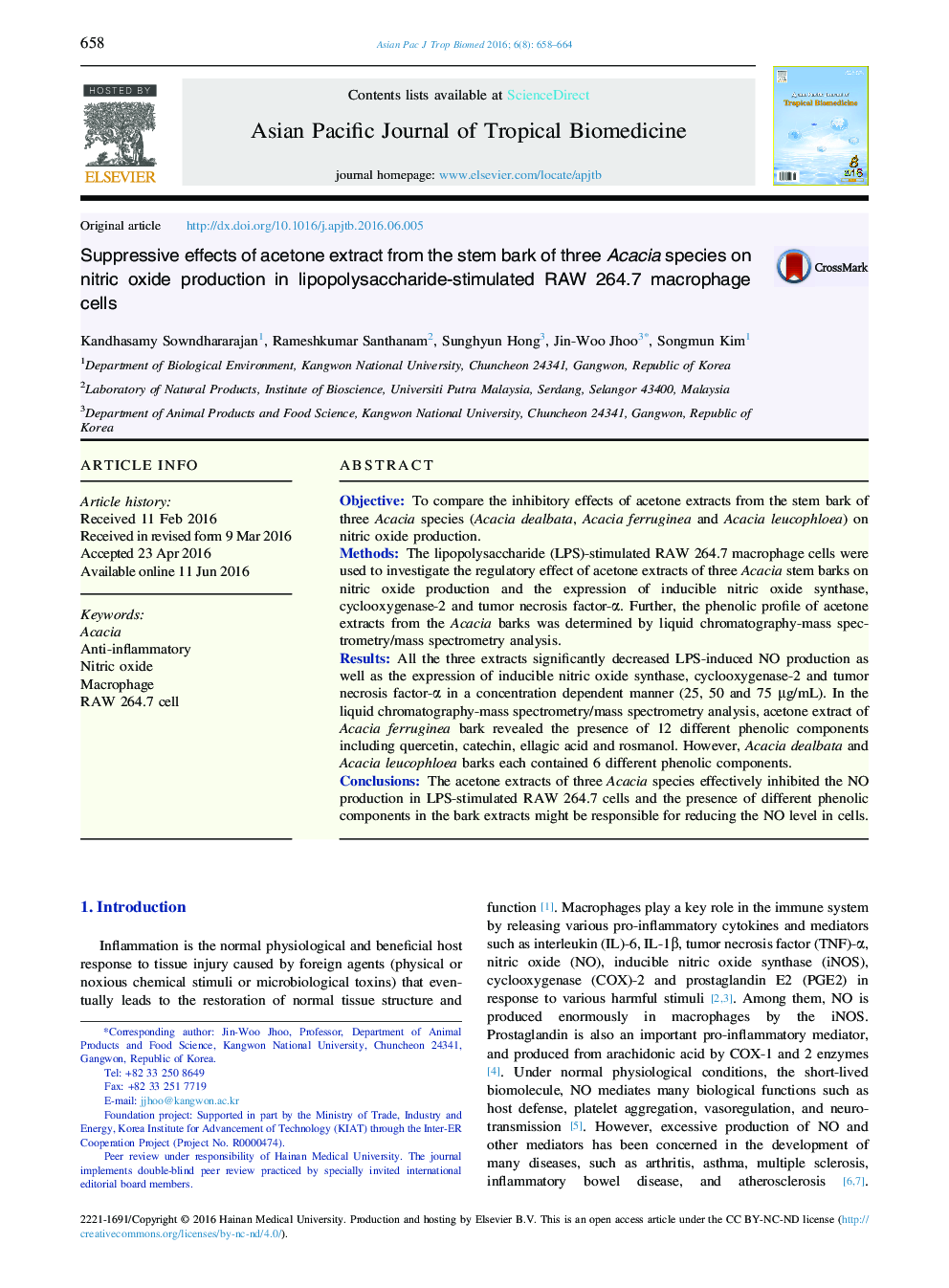| کد مقاله | کد نشریه | سال انتشار | مقاله انگلیسی | نسخه تمام متن |
|---|---|---|---|---|
| 2032367 | 1542862 | 2016 | 7 صفحه PDF | دانلود رایگان |

ObjectiveTo compare the inhibitory effects of acetone extracts from the stem bark of three Acacia species (Acacia dealbata, Acacia ferruginea and Acacia leucophloea) on nitric oxide production.MethodsThe lipopolysaccharide (LPS)-stimulated RAW 264.7 macrophage cells were used to investigate the regulatory effect of acetone extracts of three Acacia stem barks on nitric oxide production and the expression of inducible nitric oxide synthase, cyclooxygenase-2 and tumor necrosis factor-α. Further, the phenolic profile of acetone extracts from the Acacia barks was determined by liquid chromatography-mass spectrometry/mass spectrometry analysis.ResultsAll the three extracts significantly decreased LPS-induced NO production as well as the expression of inducible nitric oxide synthase, cyclooxygenase-2 and tumor necrosis factor-α in a concentration dependent manner (25, 50 and 75 μg/mL). In the liquid chromatography-mass spectrometry/mass spectrometry analysis, acetone extract of Acacia ferruginea bark revealed the presence of 12 different phenolic components including quercetin, catechin, ellagic acid and rosmanol. However, Acacia dealbata and Acacia leucophloea barks each contained 6 different phenolic components.ConclusionsThe acetone extracts of three Acacia species effectively inhibited the NO production in LPS-stimulated RAW 264.7 cells and the presence of different phenolic components in the bark extracts might be responsible for reducing the NO level in cells.
Journal: Asian Pacific Journal of Tropical Biomedicine - Volume 6, Issue 8, August 2016, Pages 658–664